Have you ever craved a workout that not only transforms your body but also taps into the inherent strength you possess?
Imagine a routine that challenges you, not just physically, but on a deeper level.
If this resonates, welcome to the realm of Calisthenics Push Pull Legs (PPL) split – a dynamic approach to bodyweight training that transcends the ordinary.
Ever dreamed of sculpting your body without being tethered to heavy gym equipment?
What if we told you that the path to your strongest self lies in harnessing the power of your own body weight?
Let’s unlock the secrets of Calisthenics Push Pull Legs split – a journey that transforms not just your physique but your entire approach to fitness.
Understanding The Basics
What is Calisthenics?
Calisthenics, derived from the Greek words “kalos” (beautiful) and “sthenos” (strength), transcends the realm of mere exercise—it’s a lifestyle.
At its core, calisthenics workout leverages your body weight as resistance, emphasizing controlled, precise movements that redefine traditional strength training.
This holistic fitness discipline not only builds physical prowess but also cultivates grace and aesthetic appeal.
The Essence of Push Pull Legs (PPL)
The Push Pull Legs (PPL) split is not merely a workout routine; it represents a strategic approach to crafting a comprehensive physique.
This method organizes training sessions into three distinct categories: Push, Pull, and Legs.
Each day is dedicated to targeting specific muscle groups, fostering a well-rounded development that extends beyond pure strength.
The term “Push” refers to exercises that involve pushing movements, such as chest and shoulder exercises. “Pull” focuses on pulling movements, working muscles like those in the back. “Legs” encompasses lower body exercises.
This approach prioritizes and enhances agility, flexibility, and endurance, contributing to a more versatile and functional level of fitness.
Benefits of Calisthenics PPL Split
These evidenced-based benefits showcase the effectiveness of Calisthenics PPL as a holistic and adaptable fitness approach.
- Versatility: Calisthenics allows for a personalized routine adaptable to various fitness levels and goals. A study published in the Journal of Sports Science & Medicine found that personalized training programs often lead to better adherence and improved outcomes, highlighting the importance of tailoring workouts to individual needs.
- Efficiency: The PPL split maximizes gains through compound movements, engaging multiple muscle groups in each session. Research in the European Journal of Applied Physiology suggests that compound exercises can lead to greater strength gains compared to isolation exercises, supporting the efficiency of PPL.
- Convenience: The minimal equipment requirement of calisthenics PPL enhances accessibility. A study in the International Journal of Exercise Science indicates that home-based exercise programs, such as calisthenics, can be as effective as gym-based programs, promoting the convenience of this fitness option.
- Balanced Development: The categorization into push, pull, and leg days ensures a well-balanced development. A review in the Journal of Strength and Conditioning Research emphasizes the importance of balanced training for overall muscle development and injury prevention.
- Functional Strength: Calisthenics PPL emphasizes functional movements mirroring real-world activities. Research in the Journal of Human Kinetics suggests that functional strength training improves activities of daily living and enhances overall physical performance.
Getting Started: Essential Warm-ups
Before diving into the workout, let’s talk about preparation. Dynamic stretches and joint mobilization or we can say effective warm-up exercises are non-negotiable. These not only enhance flexibility but also form the cornerstone of injury prevention.
- Leg Swings
- Arm Circles
- Hip Circles
- Neck Tilts and Turns
- Ankle Rolls
Designing Your Calisthenics PPL Routine
Crafting an effective routine involves understanding the targeted muscles and choosing appropriate exercises. Let’s break down each day.
Push Day: Unleashing Upper Body Strength:
Targeted Muscles:
- Chest
- Shoulders
- Triceps
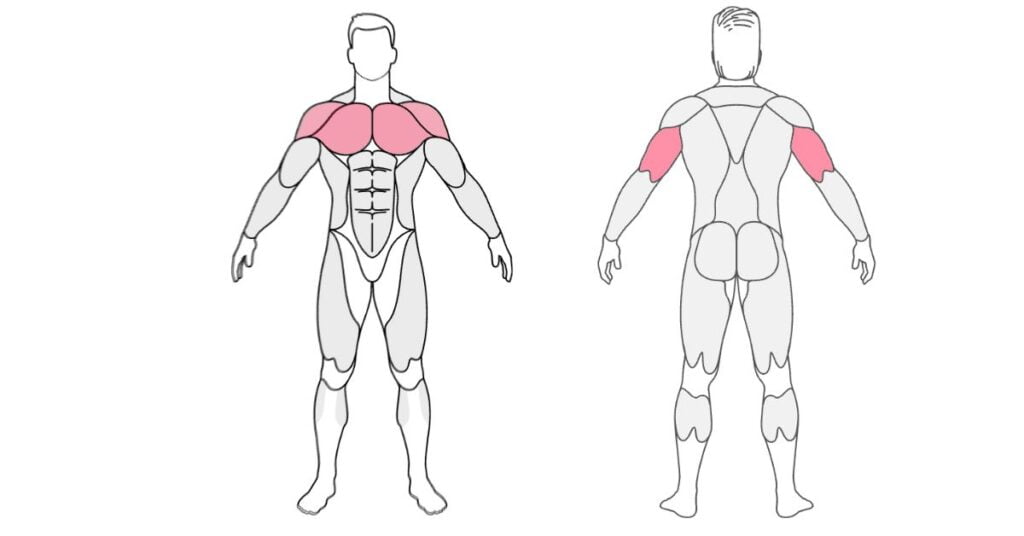
Sample Exercises:
1. Push-ups:
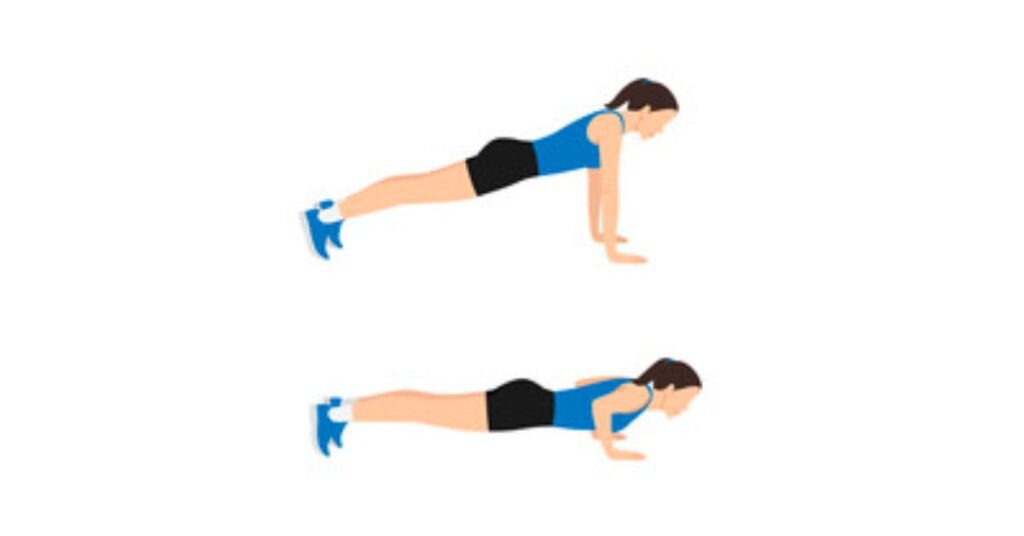
- Start in a plank position with your hands slightly wider than shoulder-width apart.
- Lower your body by bending your elbows while keeping your body straight.
- Push back up to the starting position.
- Perform 3 sets of 10-15 reps.
2. Dips:
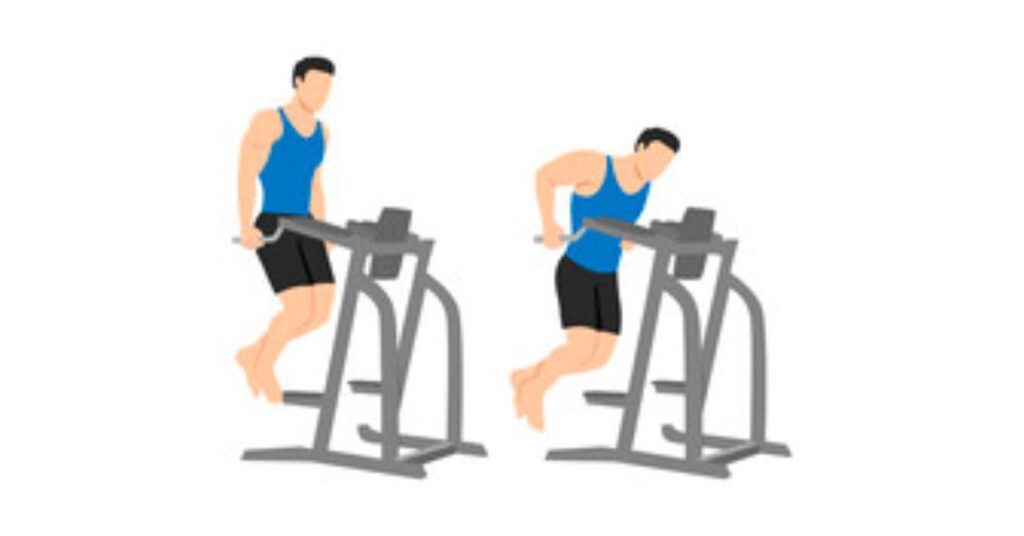
- Position yourself between parallel bars or sturdy surfaces.
- Lower your body by bending your elbows until your upper arms are parallel to the ground.
- Push yourself back up to the starting position.
- Perform 3 sets of 8-12 reps.
3. Pike Push-ups:
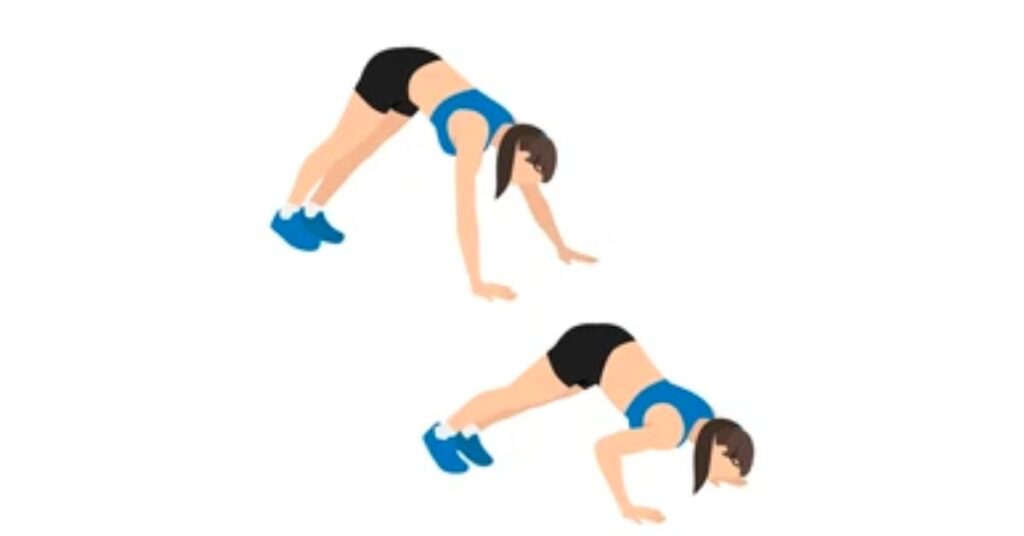
- Begin in a downward dog position with your hands on the ground and hips raised.
- Lower your head towards the ground by bending your elbows.
- Push back up to the starting position.
- Perform 3 sets of 10-12 reps.
4. Handstand Push-ups:
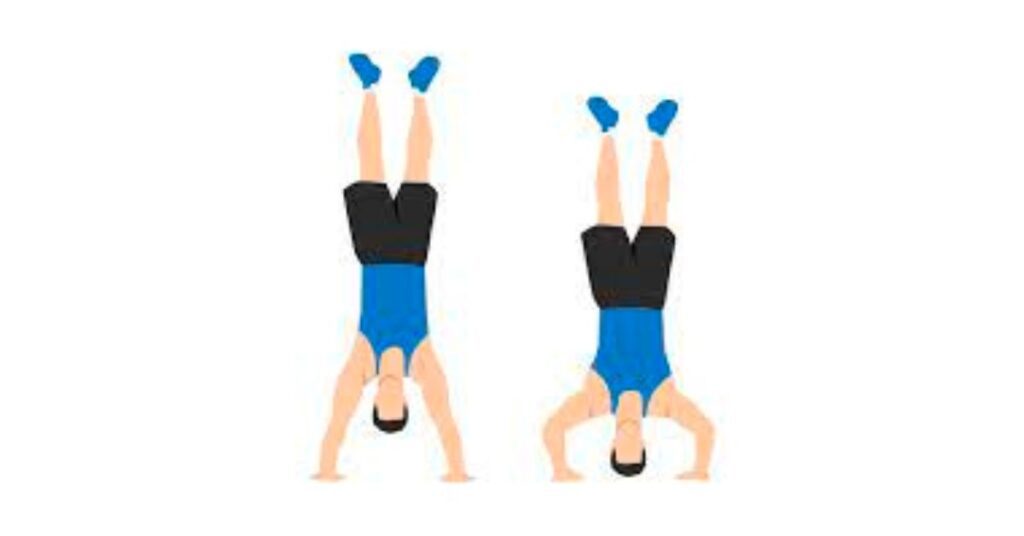
- Start in a handstand position against a wall or free-standing if advanced.
- Lower your head towards the ground by bending your elbows.
- Push back up to the starting position.
- Modify by performing pike handstand push-ups if needed.
- Perform 3 sets of 8-10 reps.
Pull Day: Crafting a Back to Admire:
Targeted Muscles:
- Back
- Biceps
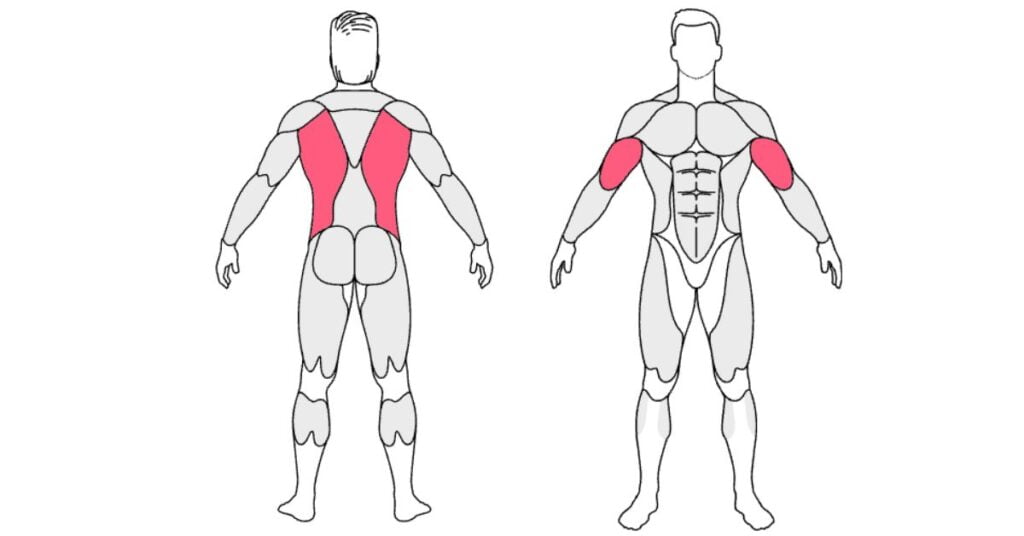
Sample Exercises:
1. Pull-ups:
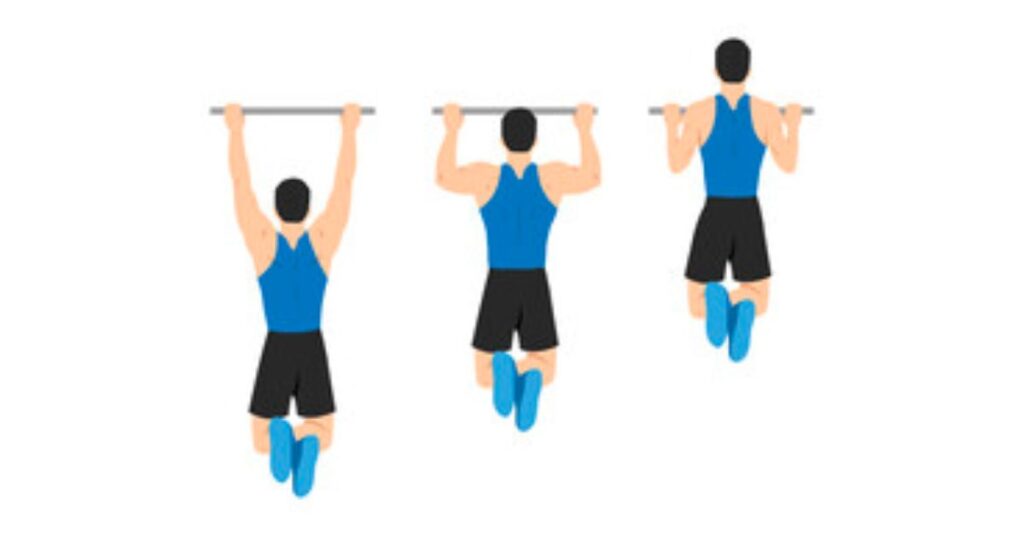
- Hang from a horizontal bar with your palms facing away.
- Pull your body upward by bending your elbows until your chin is above the bar.
- Lower yourself back down with control.
- Perform 3 sets of 5-10 reps.
2. Inverted Rows:
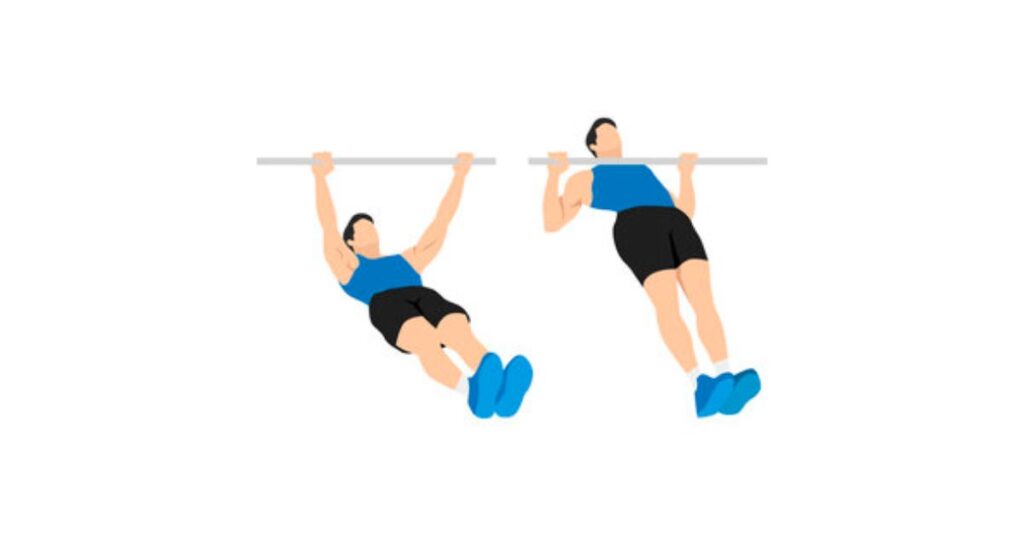
- Set up a bar at hip height.
- Lie on your back underneath the bar and grasp it with an overhand grip.
- Pull your chest towards the bar while keeping your body straight.
- Lower yourself back down.
- Perform 3 sets of 10-12 reps.
3. Chin-ups:
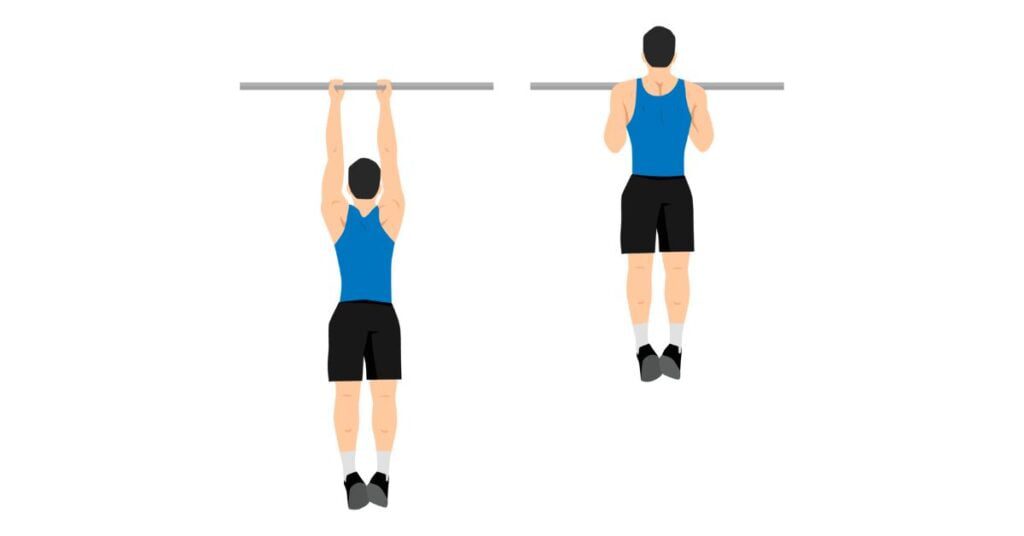
- Hang from a horizontal bar with your palms facing towards you.
- Pull your body upward by bending your elbows until your chin is above the bar.
- Lower yourself back down with control.
- Perform 3 sets of 6-10 reps.
4. Bodyweight Rows:
- Use a suspension trainer or set up a bar at waist height.
- Hold the handles or bar with an overhand grip, walk your feet forward, and lean back.
- Pull your chest towards the handles or bar.
- Lower yourself back down.
- Perform 3 sets of 12-15 reps.
Leg Day: Building a Solid Foundation:
Targeted Muscles:
- Quads
- Hamstrings
- Glutes
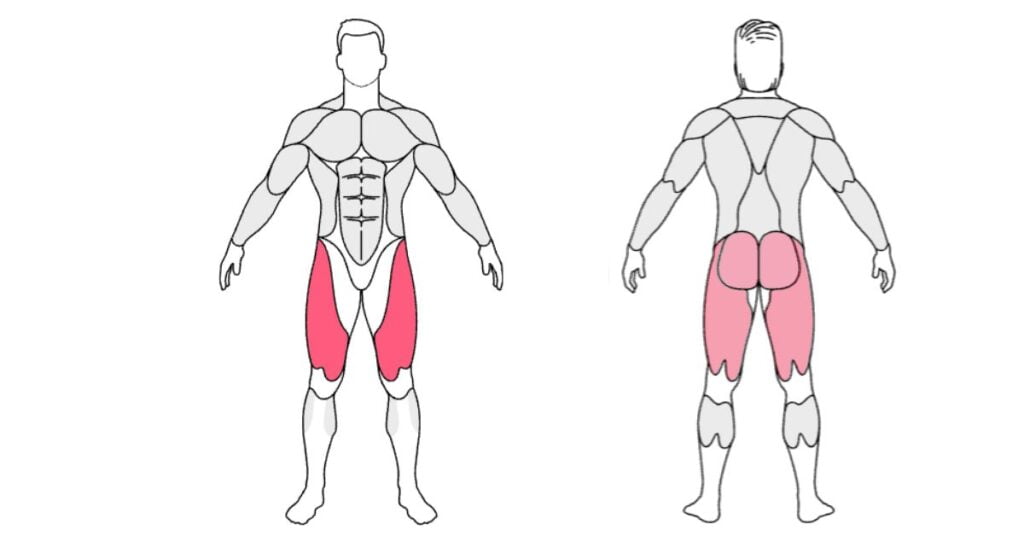
Sample Exercises:
1. Squats:
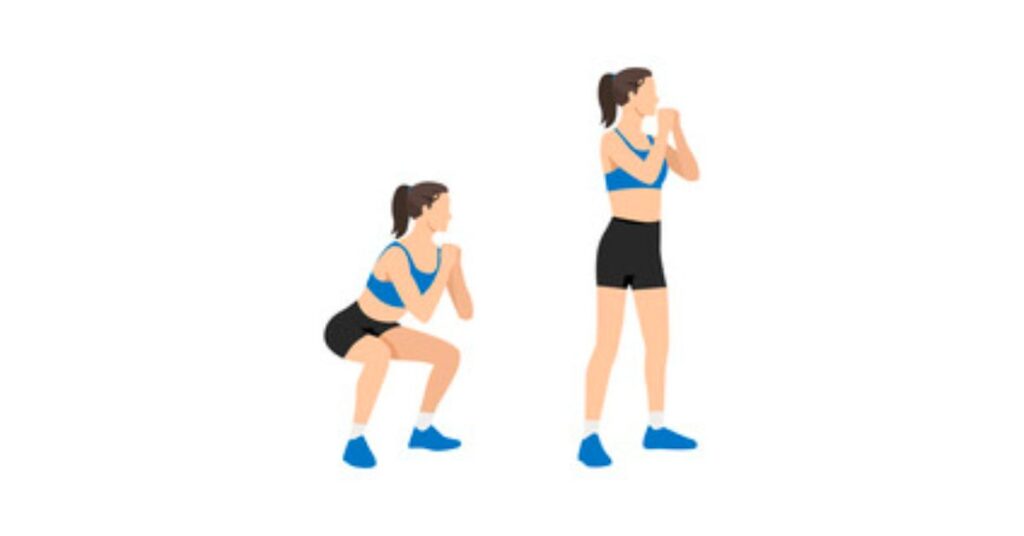
- Stand with your feet shoulder-width apart.
- Lower your body by bending your knees and pushing your hips back.
- Keep your chest up and back straight.
- Rise back up to the starting position.
- Perform 3 sets of 12-15 reps.
2. Lunges:
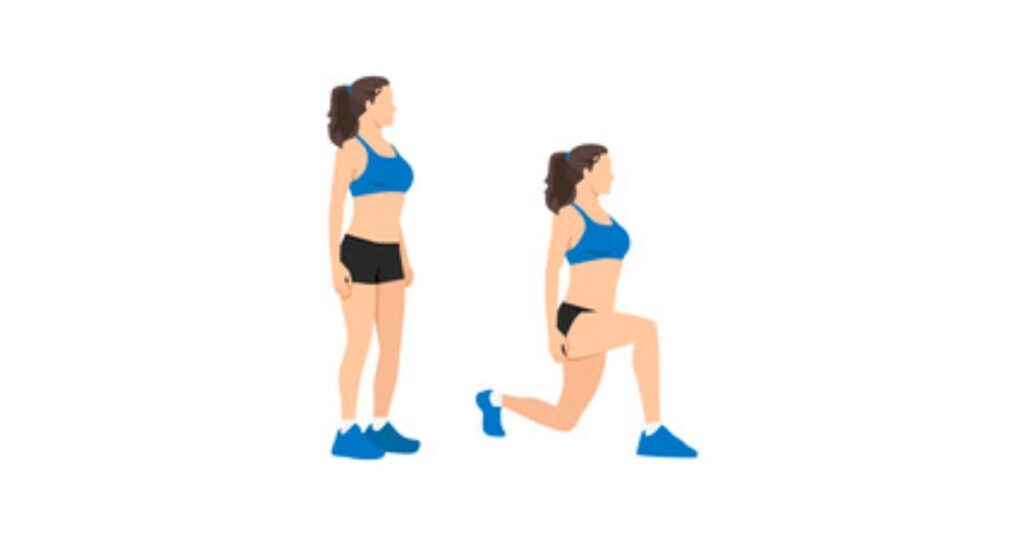
- Stand with feet together, take a step forward with one foot, and lower your body until both knees are bent at a 90-degree angle.
- Push off the front foot and return to the starting position.
- Repeat on the other leg.
- Perform 3 sets of 10-12 reps per leg.
3. Calf Raises:
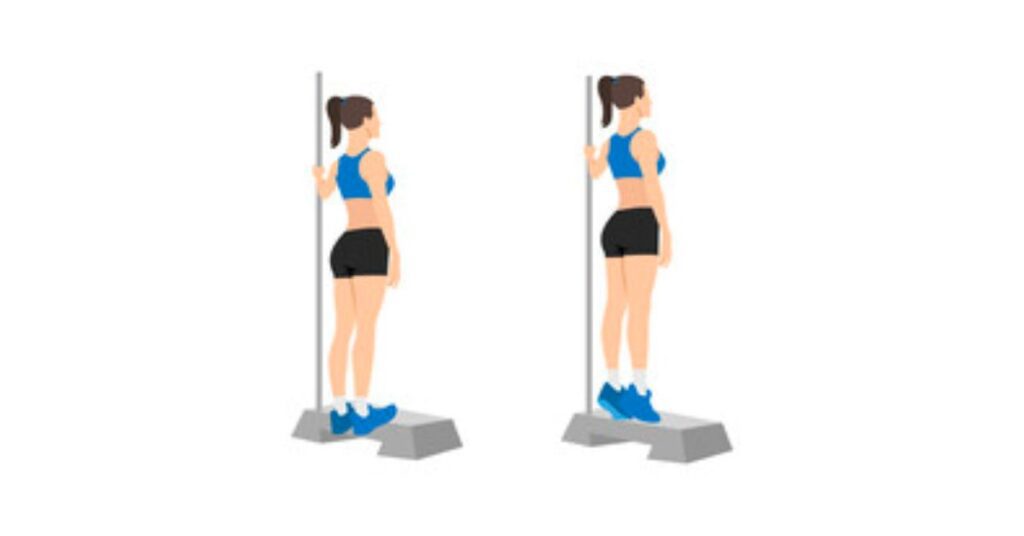
- Stand with your feet hip-width apart.
- Rise onto the balls of your feet, lifting your heels as high as possible.
- Lower your heels back down.
- Perform 3 sets of 15-20 reps.
4. Bulgarian Split Squats:
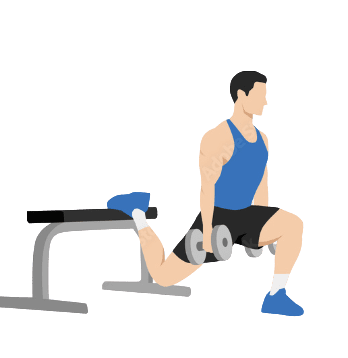
- Stand facing away from a bench or raised platform.
- Place one foot behind you on the bench.
- Lower your body by bending your front knee, and keeping the back foot elevated.
- Push back up to the starting position.
- Perform 3 sets of 10-12 reps per leg.
Sample Workouts
Beginner’s Calisthenics PPL Routine:
Designed for newcomers, this routine introduces basic calisthenics movements with a gradual intensity increase. Focused on foundational strength, mobility, and body awareness, it’s ideal for building confidence and targeting key muscle groups.
Push Day:
- Push-ups: 3 sets of 10-12 reps
- Incline Push-ups: 3 sets of 8-10 reps
- Wall Push-ups: 3 sets of 12-15 reps
- Bench Dips: 3 sets of 10-12 reps
- Plank: 3 sets, hold for 30 seconds each
Pull Day:
- Bodyweight Rows: 3 sets of 10-12 reps
- Assisted Pull-ups (using a band): 3 sets of 5-8 reps
- Australian Pull-ups: 3 sets of 12-15 reps
- Standing Bicep Curls: 3 sets of 12-15 reps
- Reverse Plank: 3 sets, hold for 30 seconds each
Leg Day:
- Bodyweight Squats: 3 sets of 12-15 reps
- Lunges: 3 sets of 10-12 reps per leg
- Calf Raises: 3 sets of 15-20 reps
- Box Step-ups: 3 sets of 10-12 reps per leg
- Glute Bridges: 3 sets of 12-15 reps
Intermediate Challenges:
For those progressing in calisthenics, the intermediate routine adds complexity with advanced exercises. Enhancing strength, coordination, and skill, this routine offers a bridge between basic and advanced levels, pushing individuals to achieve new milestones.
Push Day:
- Decline Push-ups: 4 sets of 10-12 reps
- Pike Push-ups: 4 sets of 8-10 reps
- Diamond Push-ups: 4 sets of 10-12 reps
- Tricep Dips with Leg Raise: 4 sets of 8-10 reps
- Plank to Push-up: 4 sets of 8-10 reps
Pull Day:
- Pull-ups: 4 sets of 8-10 reps
- Archer Pull-ups: 4 sets of 6-8 reps per side
- L-sit Pull-ups: 4 sets of 6-8 reps
- Alternating Grip Pull-ups: 4 sets of 10-12 reps
- Hanging Leg Raises: 4 sets of 12-15 reps
Leg Day:
- Pistol Squats: 4 sets of 6-8 reps per leg
- Jumping Lunges: 4 sets of 12-15 reps per leg
- Box Jumps: 4 sets of 8-10 reps
- Single-Leg Calf Raises: 4 sets of 12-15 reps per leg
- Bulgarian Split Squats: 4 sets of 10-12 reps per leg
Advanced Mastery Level:
Tailored for calisthenics experts, the advanced routine incorporates plyometrics and isometrics. With a focus on one-arm pull-ups, handstand push-ups, and explosive squats, it represents the pinnacle of proficiency, ideal for those seeking peak performance and mastery of bodyweight exercises.
Push Day:
- Handstand Push-ups: 5 sets of 6-8 reps
- Planche Progressions: 5 sets of 10-15 seconds holds
- One-Arm Push-ups: 5 sets of 4-6 reps per arm
- Tricep Planche Push-ups: 5 sets of 6-8 reps
- 90-Degree Push-ups: 5 sets of 10-12 reps
Pull Day:
- Muscle-ups: 5 sets of 4-6 reps
- Front Lever Progressions: 5 sets of 10-15 seconds holds
- One-Arm Pull-ups: 5 sets of 4-6 reps per arm
- Typewriter Pull-ups: 5 sets of 8-10 reps
- Windshield Wipers: 5 sets of 10-12 reps per side
Leg Day:
- Explosive Pistol Squats: 5 sets of 6-8 reps per leg
- Depth Jumps: 5 sets of 8-10 reps
- Tuck Jumps: 5 sets of 12-15 reps
- Sissy Squats: 5 sets of 10-12 reps
- Nordic Hamstring Curls: 5 sets of 8-10 reps
Common Mistakes and How to Avoid Them
1. Wrist and Elbow Concerns:

- Mistake: Improper hand placement.
- Solution: Ensure wrists are aligned with the shoulders during exercises like push-ups and handstands. Distribute weight evenly across the palms to reduce stress on the wrists and elbows. Consider wrist warm-ups before intense sessions to enhance flexibility and reduce the risk of injury.
2. Lower Back Safety:
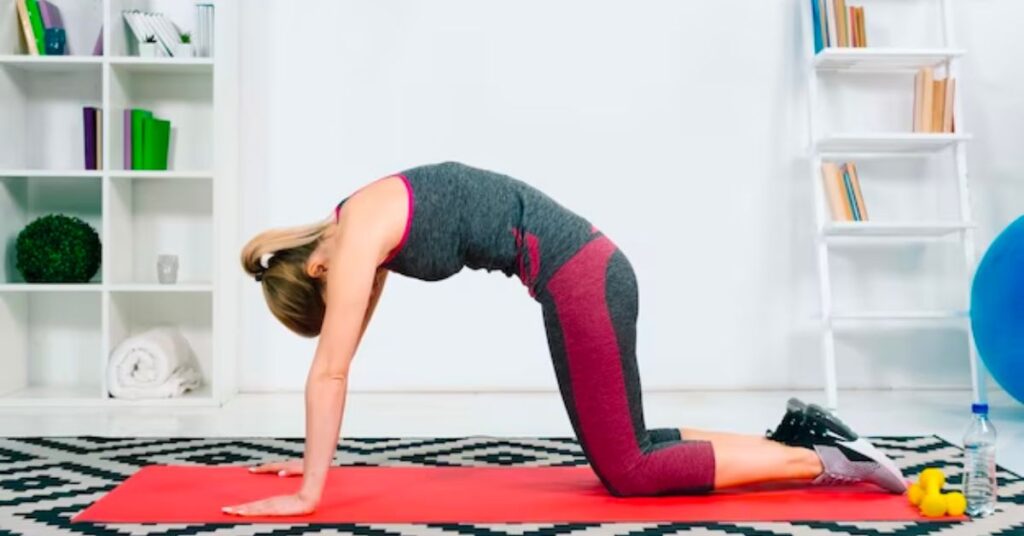
- Mistake: Overarching or rounding the lower back.
- Solution: Maintain a neutral spine during exercises such as squats and planks. Engage your core muscles to stabilize the spine and avoid excessive stress on the lower back. Focus on proper form over the number of repetitions, prioritizing quality over quantity.
3. Shoulder Alignment:

- Mistake: Allowing shoulders to hunch or shrug during exercises.
- Solution: Keep shoulders down and away from the ears. This ensures proper engagement of the shoulder muscles and reduces the risk of strain or impingement. Strengthening the shoulder stabilizers through targeted exercises can further enhance stability.
4. Lack of Warm-up:
- Mistake: Skipping or inadequate warm-up.
- Solution: Prepare your body with a dynamic warm-up before engaging in intense exercises. This increases blood flow to muscles, improves flexibility, and reduces the chance of strains or pulls. Include movements that mimic the exercises in your routine to specifically target the muscle groups you’ll be working.
5. Inconsistent Breathing:

- Mistake: Holding your breath during exercises.
- Solution: Maintain a consistent breathing pattern. Exhale during the exertion phase of the movement and inhale during the relaxation phase. Proper breathing not only enhances oxygen delivery to muscles but also stabilizes the core.
Fueling Your Body: Nutrition Tips
Proper nutrition is vital for calisthenics success. Here are key tips:
1. Balanced Diet:

- Focus on Macro-nutrients: Ensure your diet includes an adequate balance of macronutrients – protein, carbohydrates, and healthy fats. These elements serve as the foundation for energy production, muscle repair, and overall metabolic health.
- Micro-nutrients Matter: Don’t overlook micronutrients like vitamins and minerals. A diverse range of fruits and vegetables ensures you receive a spectrum of essential micronutrients crucial for various bodily functions.
2. Protein Intake:

- Prioritize Lean Proteins: For muscle repair and growth, incorporate lean protein sources such as chicken, fish, tofu, eggs, and legumes. Protein is essential for recovery, especially after intense calisthenics sessions.
- Timing Matters: Distribute protein intake throughout the day, including pre and post-workout meals. Consuming protein within an hour after exercise aids in muscle protein synthesis.
3. Carbohydrates for Energy:

- Complex Carbs for Sustained Energy: Choose complex carbohydrates like whole grains, fruits, and vegetables for sustained energy levels. They provide a steady release of glucose, crucial for endurance during calisthenics workouts.
- Timing Carbs Around Workouts: Consume carbohydrates before and after workouts to optimize glycogen stores, promoting energy and aiding recovery.
4. Healthy Fats:

- Incorporate Omega-3 Fatty Acids: Include sources of omega-3 fatty acids, such as fatty fish, flaxseeds, and walnuts. These fats support joint health and overall inflammation reduction, contributing to improved recovery.
- Mindful Portion Control: While fats are essential, practice portion control to maintain a balanced caloric intake. Healthy fats are calorie-dense, so moderation is key.
5. Hydration:

- Water is Fundamental: Stay adequately hydrated. Water is vital for digestion, nutrient absorption, and temperature regulation. Dehydration can hinder performance and slow down recovery.
- Electrolytes During Intense Sessions: For prolonged or intense calisthenics sessions, consider incorporating electrolyte-rich beverages to replenish salts lost through sweat.
6. Meal Timing:
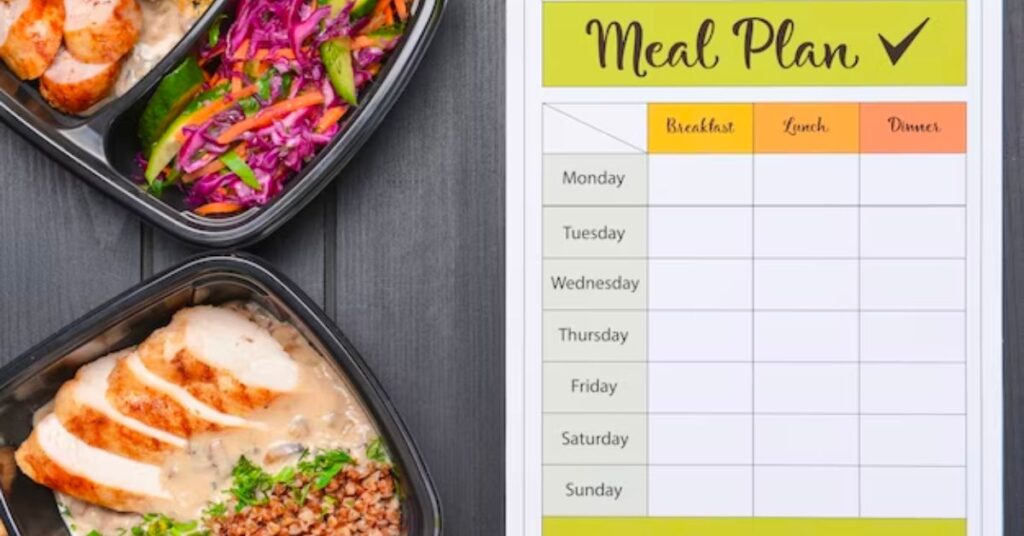
- Pre-Workout Nutrition: Consume a balanced meal 2-3 hours before your calisthenics session, emphasizing carbohydrates and moderate protein.
- Post-Workout Refuel: Prioritize a post-workout meal or snack containing protein and carbohydrates to kickstart recovery and replenish glycogen stores.
Conclusion
In conclusion, success in calisthenics requires a holistic approach—incorporating proper nutrition, consistent training, and mindful recovery.
Calisthenics stands out for its simplicity and adaptability to diverse fitness levels. Maximize your journey by maintaining a balanced diet, staying hydrated, and avoiding common mistakes.
Progress gradually, listen to your body, and sustain an enjoyable fitness routine, whether you’re a beginner, intermediate, or advanced practitioner.
Calisthenics is more than a workout; it’s a lifestyle promoting strength, flexibility, and overall well-being.
Embrace the journey, celebrate victories, and relish the transformative process for both body and mind.


Comments are closed.